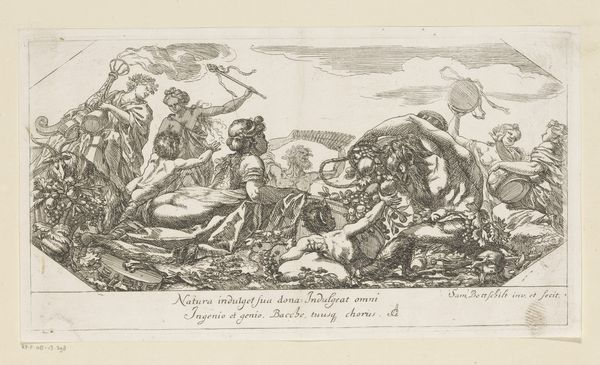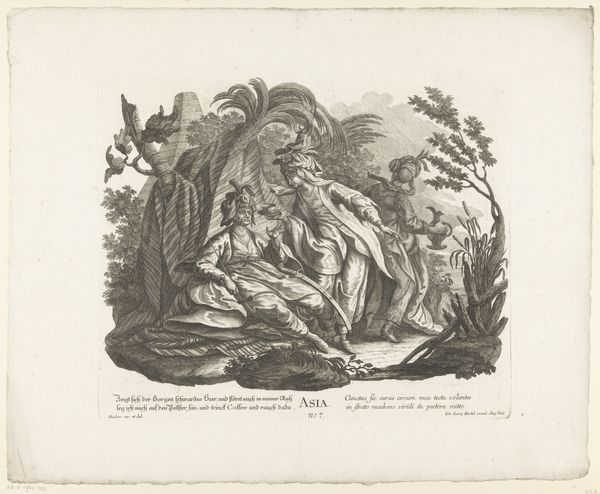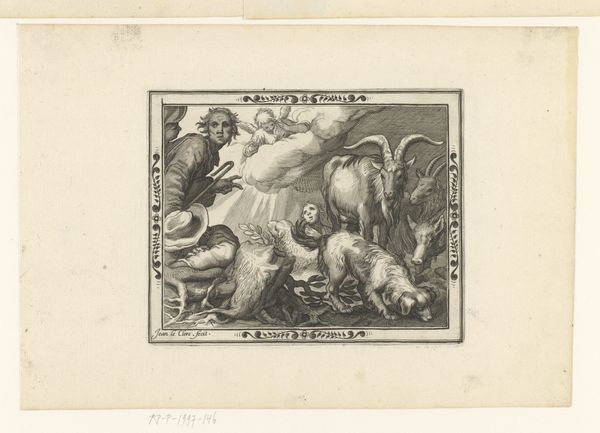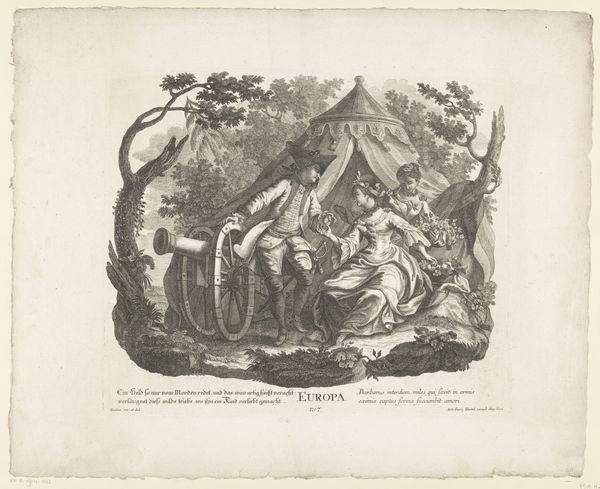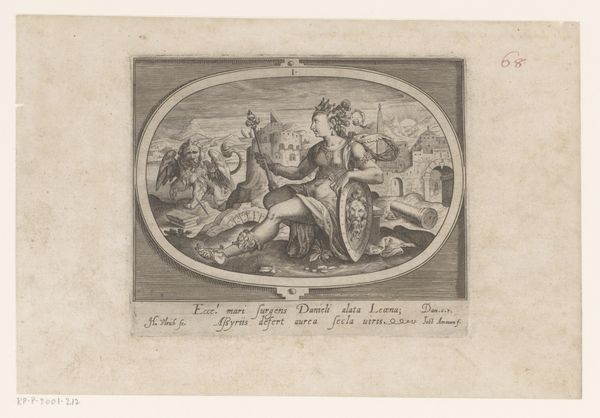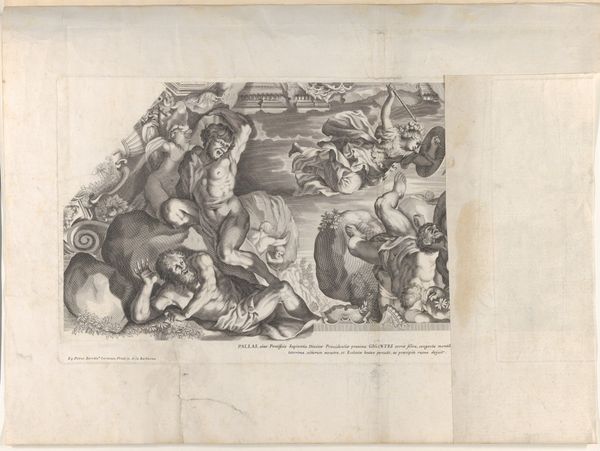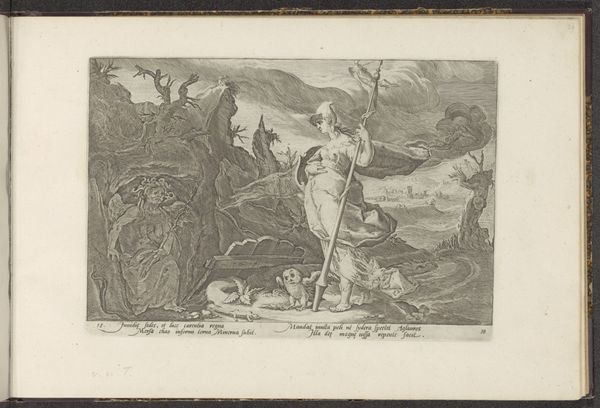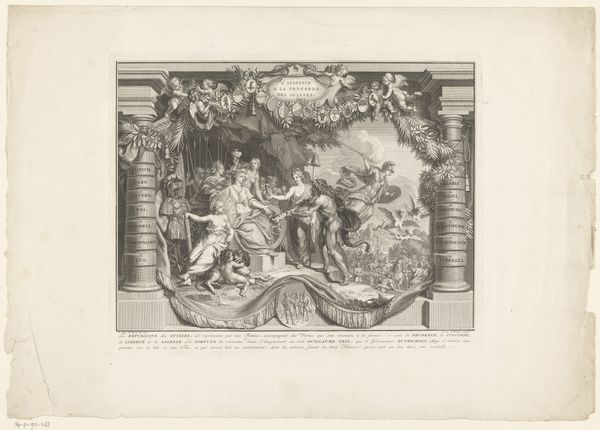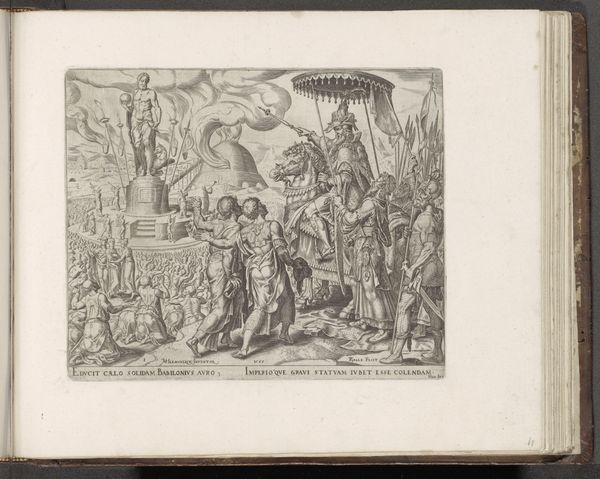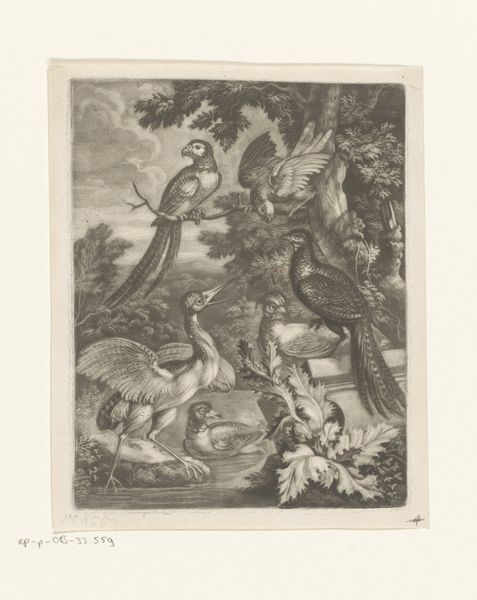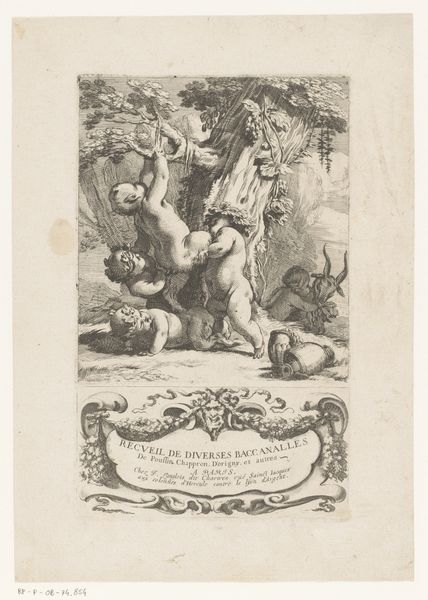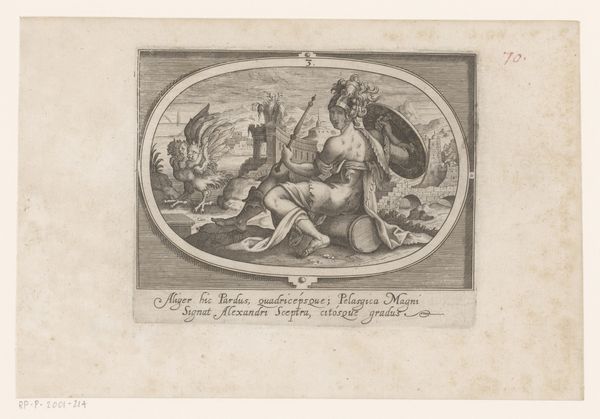
print, engraving
# print
#
old engraving style
#
landscape
#
engraving
#
indigenous-americas
Dimensions: height 308 mm, width 365 mm
Copyright: Rijks Museum: Open Domain
This print, titled "Amerika," was made anonymously, using the technique of etching. Etching is a method of printmaking that relies on the corrosive action of acid. The artist would have first coated a metal plate, likely copper, with a waxy, acid-resistant substance. They then scratched an image into this coating, exposing the metal beneath. When the plate was submerged in acid, the exposed lines would be eaten away, creating grooves. The deeper the grooves, the more ink they would hold. This print offers a fascinating look into early European perceptions of the Americas, portraying Indigenous people in a stylized, almost classical manner. What might the labor be that went into gathering pearls or building such a structure? The image also speaks volumes about the relationship between exploration, representation, and the burgeoning global economy. The print itself, as a reproducible object, played a role in disseminating these views. Understanding its material and process helps us recognize the complex social context it emerged from, blurring any distinction between art and craft.
Comments
No comments
Be the first to comment and join the conversation on the ultimate creative platform.

